QuestionHi, I bought a miniature schnauzer last wednesday, by friday she was sleeping all the time. Saturday she threw up, called the pet shop owner and told me she had been separated from her siblings and was probably feeling depressed, gave me number of vet he uses. Vet is expensive, went to another and found out she had parasites (coxilia), gave her shot and medicine. She grew worse, diarrhrea and vomiting, no eating or drinking, she weighs 1 pound, 6 ounces. I went to pet shop owner and told him he had sold me a sick puppy, told me to take her to his vet. Vet hospitalized her and pet owner will pay, tested her for parvo also, iv fluids and medicines. Vet stated that although she tested negative for parvo, most likely because she had been given medicine, he was 50% sure she had it. Vet fed her food, her stomach is fully bloated now, like ready to explode, says she needs to evacuate stool probably. Pet owner said to vet he would pay 2 days only. Vet said he would discharge her today! I am worried sick. She is only 2 months old! I want to know if you think that she was already sick. What are my rights? I don't want to watch her die in my home.
AnswerYes, it sounds like you were sold a sick puppy. There is a puppy lemon law in PA, but each state is different so you should contact your Attorney General and find out what the law is. Here in PA, the breeder/seller is responsible for paying for treatment UP to purchase price, refunding your money or exchanging for a new puppy if the puppy is found to have an infectious or contagious disease, of which coccidia and parvo are both. If the pet shop refuses to do anything, contact the local media and get them on the news and give them a bad wrap because I am sure there are other people who bought sick puppies there!
Coccidia is a parasite that many puppies are infected with because of unsanitary conditions and she would have been infected when you bought her because it takes 2 weeks for incubation...this alone can be deadly in tiny puppies.
Parvovirus is something that we vaccinate against, so I am guessing that the pet store did not have her properly vaccinated and she picked up the virus at the pet shop as it takes 1-2 weeks for symptoms to develop. Usually these puppies need to be in the hospital for about a week on IV Fluids and antibiotics, and many puppies die. A puppy should only be discharged after they are eating and drinking with no vomiting for 24-48 hours.
Here are more complete details on the 2 disease processes...
Canine parvovirus type 2, canine parvoviral enteritis
Parvo
AffectedAnimals:
Dogs. Doberman pinschers, rottweilers, pit bulls, English springer spaniels, and Labrador retrievers are especially susceptible.
Overview:
A highly contagious viral illness that usually affects young puppies, parvovirus is transmitted from one dog to another via the infected animal's feces. Parvovirus works by temporarily destroying the lining of the intestinal tract so that very little or no food or liquid can be absorbed. As a result, dogs that become infected with parvovirus may experience bloody diarrhea, severe vomiting, weight loss, and fever. In addition, because parvovirus also affects the immune system, limiting it from producing the white blood cells that protect against infection, dogs with the virus may develop other diseases.
It is rare for an adult dog more than two years of age to get sick from parvovirus. Rather, puppies are the most severely infected by the disease, and without appropriate medical attention, they may not survive the illness. However, there is a vaccine against parvovirus that should be given to puppies as a series early in their lives, and repeated every year thereafter. With appropriate medical attention, most of these dogs will survive, but the cost of treatment is much more expensive than the cost of proper vaccination. In addition, keeping the environment free of feces can deter the spread of parvovirus, as feces can remain infective within grounds for several months.
Clinical Signs:
Clinical signs include diarrhea that may contain blood, vomiting, depression, anorexia, dehydration, weight loss, abdominal discomfort, and sometimes fever with sepsis, or bacteria within the bloodstream. The diarrhea sometimes will be absent for the first 24 to 48 hours of illness. Bloodwork results may reveal a neutropenia, or low numbers of white blood cells, and hypoalbuminemia, which is a decreased amount of a protein called albumin within the blood.
Symptoms:
See clinical signs.
Description:
Parvovirus is known clinically as canine parvovirus type 2. Because antibodies against the disease from the mother begin to decline when the puppy reaches six to 16 weeks of age, younger dogs that have not been vaccinated against the disease are at a greater risk for severe infection.
Parvovirus is transmitted when a dog ingests the feces of another dog that has the infection and is shedding the virus in its feces. Once within the animal's system, the virus typically causes clinical signs to develop five to 12 days after infection. The virus then spreads throughout the dog's system, destroying all of the rapidly dividing cells, including white and red blood cells, which are produced in the bone marrow, and cells within the intestines that absorb and digest food and fluids.
The virus causes the animal to become very sick from complications such as secondary bacterial infections and severe dehydration. Animals will also have diarrhea that may contain blood, vomiting, and fever. Supportive and aggressive medical care will often save the animal, but the cost of medical treatment is much greater than the cost of protecting the dog with appropriate vaccines. Without immediate medical attention, a dog can die from parvovirus.
Diagnosis:
Often, diagnosis is suspected based on the history and physical exam findings. A complete blood count, which measures the number of white blood cells, red blood cells, and platelets, often will show an insufficient number of white blood cells. A parvovirus test, performed using a fecal sample, shows the presence of the shedding virus in the feces. Occasionally, a false negative result can occur if the virus has not yet begun to shed in the feces; thus, dogs that test negative often are re-tested if the veterinarian suspects parvovirus.
Prognosis:
For puppies that receive medical attention and survive the first two or three days of treatment, the prognosis is good to excellent. Puppies between the ages of six to 18 weeks that do not receive treatment have a poor prognosis for survival. Older animals have a better prognosis than puppies and tend to require a briefer period of hospitalization. Ultimately, however, the prognosis is dependent on the individual animal's immune system and the degree of illness.
Transmission or Cause:
Parvovirus is transmitted from an infected dog to another dog most commonly through the fecal-oral route. The virus is shed in the feces typically for two weeks following infection. However, once the virus is within the environment, it can remain infective for months. Highly contagious, parvovirus can infect any dog that enters a contaminated area and has not had proper vaccinations. Some dogs do not develop symptoms of parvovirus; instead, they are carriers of the disease, shedding infective feces for a year or more.
Treatment:
The treatment of parvovirus is supportive care because there is no cure. Fluid therapy, usually given intravenously at a veterinary hospital, is critical in preventing dehydration and replacing fluids lost through vomiting and diarrhea. Animals typically are hospitalized and kept on fluid therapy for several days, until they are able to hold down water and food. Food and drink should not be given for 24 to 72 hours to allow the intestines time to recover. Fluids given under the skin can be beneficial as well, but there is a risk of tissue damage and cell death, or necrosis and infection through repeated skin injections.
A veterinarian usually will give the dog antibiotics to prevent infection due to bacteria. Antiemetic medications, beneficial in preventing nausea and vomiting, may be given as well. Antacids can be given to prevent damage to the esophagus from vomiting acidic fluids. With quick, aggressive medical therapy, the majority of animals survive.
Prevention:
The best prevention is proper sanitation of the environment and vaccination of young puppies. Vaccines should be given at six, nine, 12 and 16 weeks of age. Because they are more susceptible to parvovirus, certain breeds such as Doberman pinschers, rottweilers, pit bulls, English springer spaniels, and Labrador retrievers will need an additional vaccine again when they are 20 weeks of age.
Even when vaccines are administered properly and according to schedule, animals may become infected by parvovirus if they live within a contaminated environment. Because antibodies from the mother can inactivate the vaccine until the puppy is 16 to 18 weeks of age, preventing contact with infected animals or contaminated environments is critical. The use of dilute bleach (1:32) will kill the virus and is an effective cleaning agent. Always use cleaning products in well-ventilated areas. Keep all infected animals in strict isolation and prevent transmission of fecal material from one area to another.
Isospora spp., Isospora canis, Isospora felis
Coccidia
AffectedAnimals:
Dogs and cats.
Overview:
Coccidiosis is an infection of microscopic parasites called coccidia that invade the intestines of dogs and cats. The most common type of coccidia in dogs is Isospora canis, while cats are most frequently affected by Isospora felis. Coccidiosis usually is not a great threat to a healthy dog or cat, but animals that are debilitated or immunocompromised can become very ill from a coccidia infection. Puppies and kittens also are much more susceptible to severe coccidiosis.
Animals that are affected by a coccidia infection may experience intestinal problems such as watery diarrhea that can be severe, vomiting and dehydration. Death may result in severe cases. However, antibiotics have been successful at decreasing the presence of the parasites and restoring the animal's health.
Clinical Signs:
Clinical signs can include watery diarrhea that is severe, weight loss, dehydration, anorexia or a decreased or absent appetite, vomiting, abdominal pain, anemia, mental depression, and death.
Symptoms:
See Clinical Signs.
Description:
Coccidia are microscopic parasites that commonly infect the intestines of dogs and cats. Although most often, Isospora canis and Isospora felis forms of the parasite infect dogs and cats, respectively, Cryptospordium and Toxoplasma forms of coccidia may also infect these and other animals. In addition, these less commonly found parasites are zoonotic, meaning that they can be transmitted to humans.
Coccidiosis rarely affects a healthy dog or cat significantly, but it can lead to gastrointestinal problems and death in debilitated or immunocompromised adult animals. Puppies and kittens also are at risk for serious infection.
Diagnosis:
To diagnose coccidiosis, the examining veterinarian or veterinary technician will perform a fecal flotation examination in which a stool sample is evaluated under a microscope for the presence of parasites. Coccidia may be difficult to detect because these parasites are much smaller than the eggs passed from worms and thus can be easily overlooked.
Prognosis:
The prognosis for an animal that has a healthy, strong immune system is good. For puppies and kittens and older animals that have a weak immune system, the prognosis is poor without treatment and death may result. With treatment, however, the prognosis is good.
Transmission or Cause:
Transmission of coccidia begins when the immature coccidia, or oocysts, are passed in the feces from an infected dog or cat into the environment, where they can mature and be ingested by another animal. Transmission also can occur when a dog or cat eats an animal such as a rodent that has been infected with the Isospora parasite.
Treatment:
Commonly, treatment involves the use of drugs called sulfonamides, antibiotics that decrease the numbers of coccidia present. The drug should be given for at least 10 to 14 days. In animals that are dehydrated and sick, intravenous fluid therapy may be needed.
Prevention:
The key to prevention is proper sanitation to ensure that the environment is free of feces. Once the Isospora are passed in the feces, they can quickly develop into the infective stage, so rapid removal of the feces is very important. Mature oocysts of Isospora are resistant to most cleaning products and they can survive for months to years in the environment. However, the use of strong ammonia-containing compounds may be helpful in disinfection, and steam cleaning also helps kill the infectious oocysts. Be sure to allow for adequate ventilation while cleaning the infected areas, as fumes from cleaning products can be harmful to animals and people.
Dogs and cats should not be permitted to ingest rodents, since rodents may be carriers of the parasites. The treatment of infected canine and feline mothers soon after parturition may help prevent the spread of coccidia to the young.

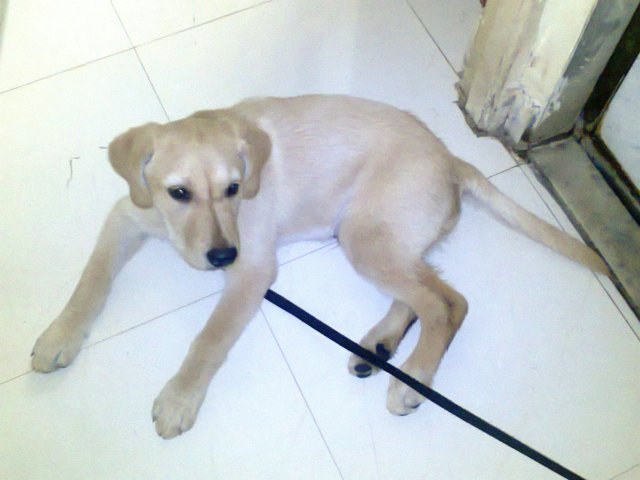 Dog daily Exercise
Question
Dollar male lab
Question : Shown below
Dog daily Exercise
Question
Dollar male lab
Question : Shown below
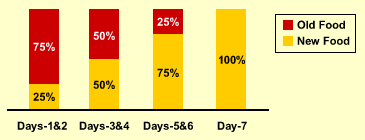 Strange noises in the stomach
QuestionQUESTION: Hello. I have a twelve-and-a-half-yea
Strange noises in the stomach
QuestionQUESTION: Hello. I have a twelve-and-a-half-yea
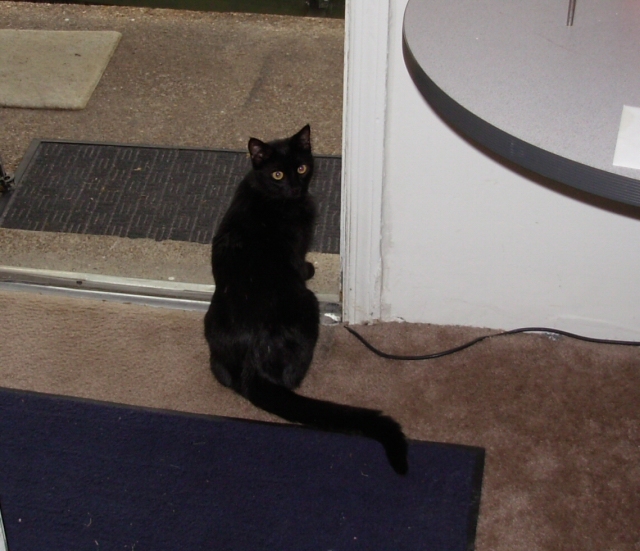 Excessive Consumption
Question
Tiny - About 12 months
Hello,
Background:
I h
Excessive Consumption
Question
Tiny - About 12 months
Hello,
Background:
I h
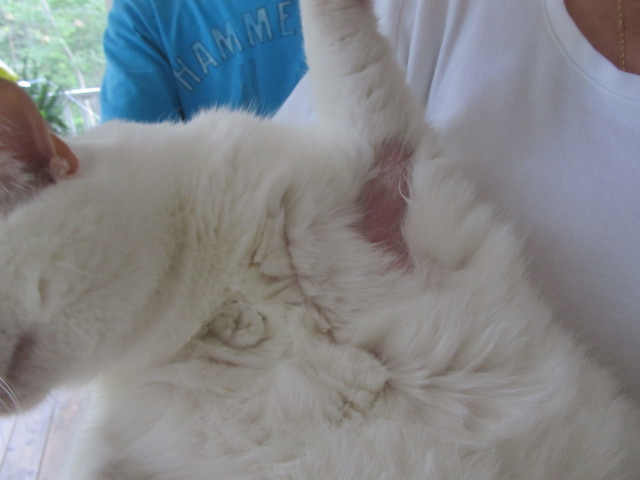 cat skin problem
Question
Clawdia
Hi, Thank you for answering my
cat skin problem
Question
Clawdia
Hi, Thank you for answering my
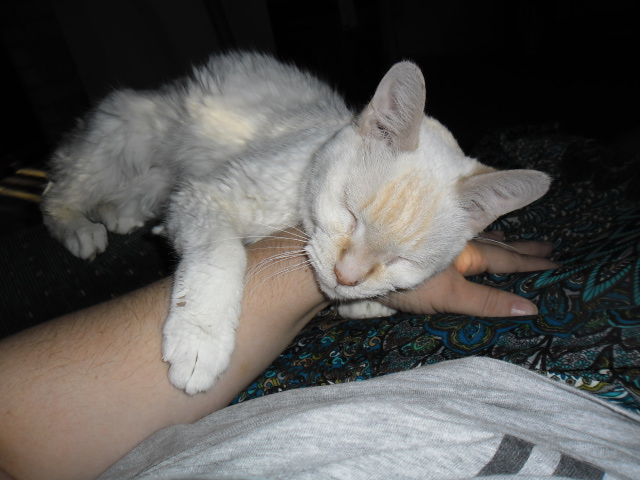 pancreatitis/lymphoma
Question
Romeo
Hello. I have a 9 year old Siames
pancreatitis/lymphoma
Question
Romeo
Hello. I have a 9 year old Siames